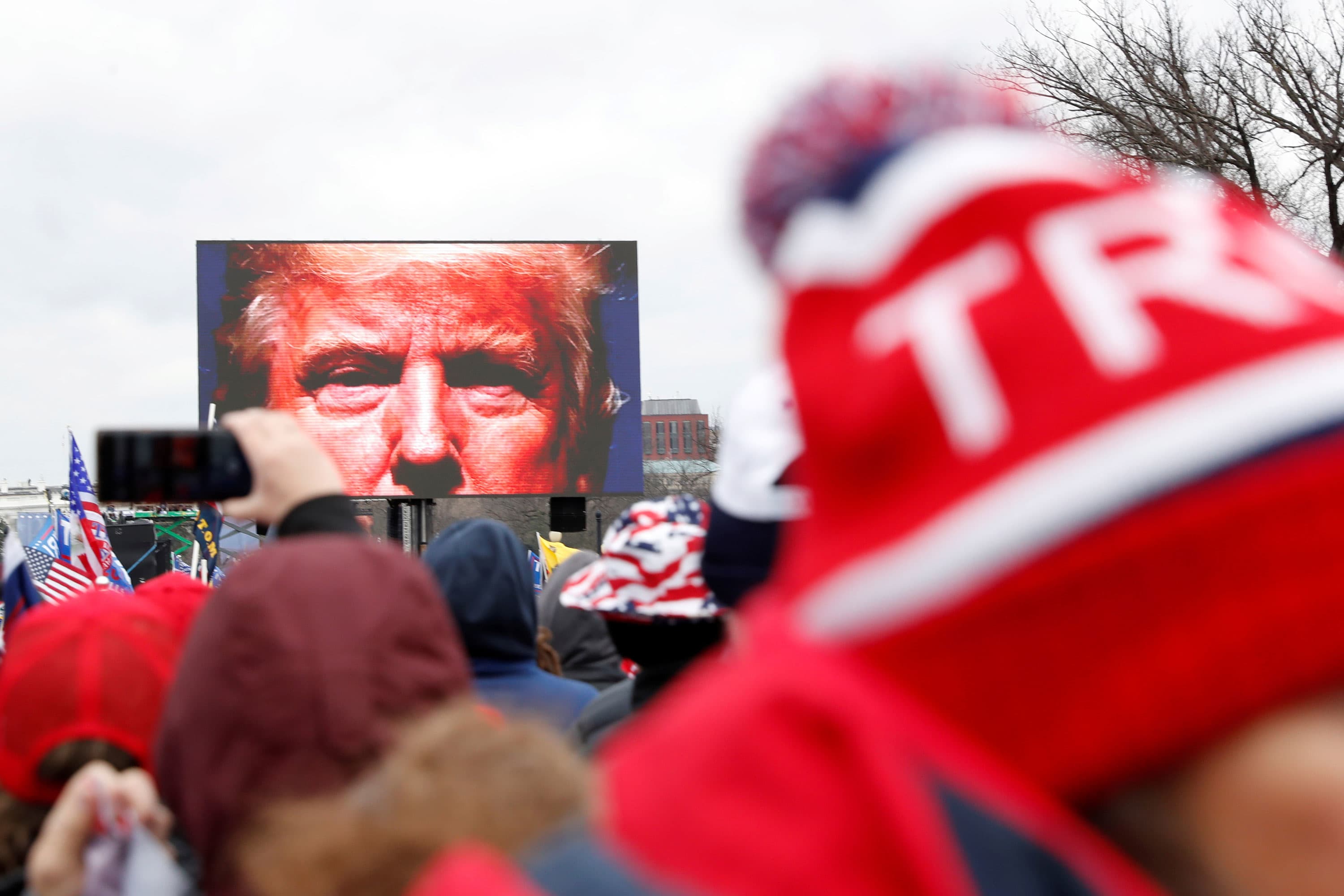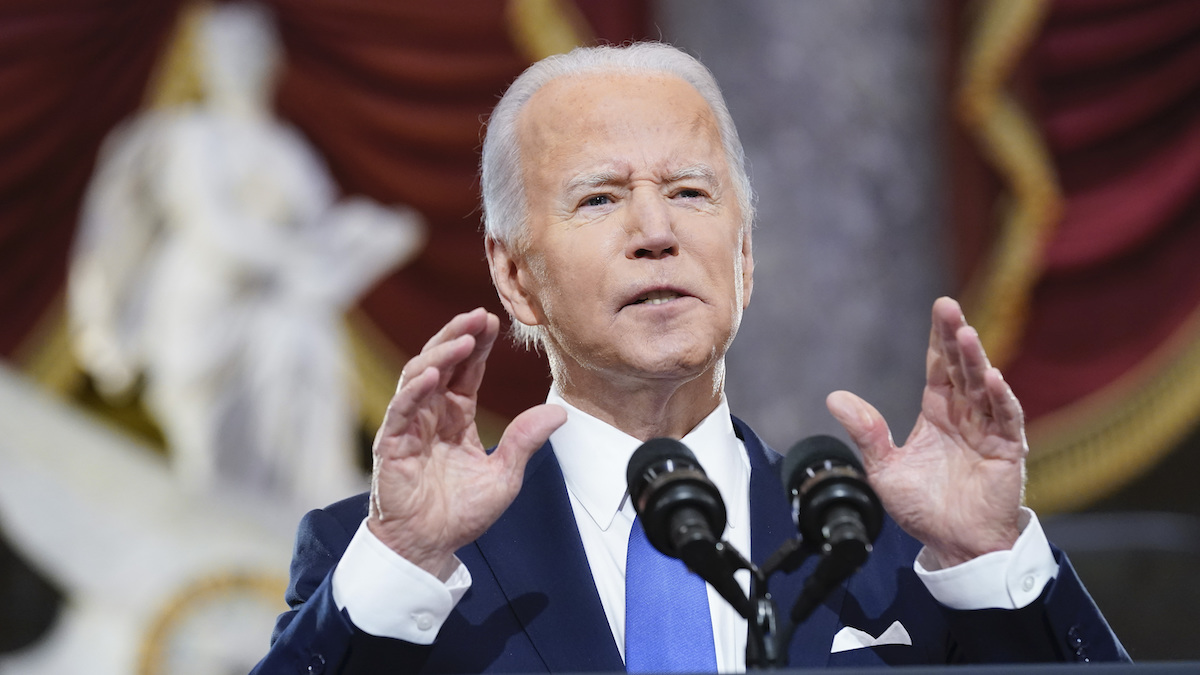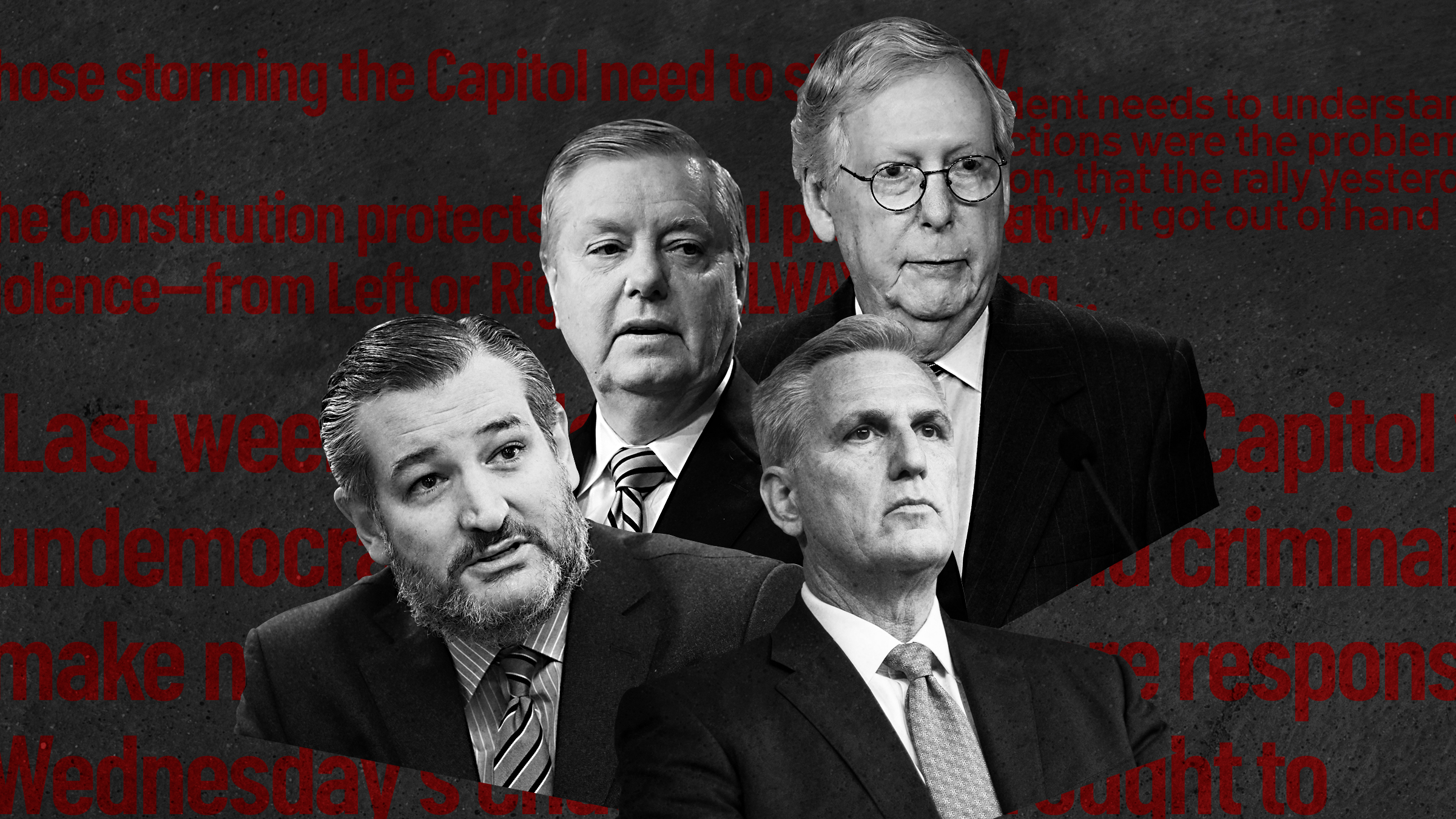Once mostly relegated to the dark corners of the internet, extreme views found a public spotlight one year ago on Jan. 6.
The unprecedented attack on the U.S. Capitol included hand-to-hand combat, a cloud of chemical spray, and vulgar words directed at officers outside and leaders inside. Experts say it also unmasked images of political extremism and racism brewing in our country unlike anything we've ever seen.
“White extremists understand it. We've seen the noose used as a device of intimidation, and Black folks saw it that way,” said Morgan State University research professor and Institute for Urban Research Director Ray Winbush.
We're making it easier for you to find stories that matter with our new newsletter — The 4Front. Sign up here and get news that is important for you to your inbox.
The gallows erected on the west front of the U.S. Capitol along with a bright orange noose was one of the many unforgettable images from the insurrection. A confederate flag paraded through the halls while other flags and confederate images were seen outside.
"Black folk, I think, and white folk interpreted some of it differently,” Winbush said. “We saw it as an act of racism.”
He said that day empowered racial extremists in the crowd.
"It had all of the trappings of a lynch mob,” he said. “In the history of American lynchings, they always combine entertainment with violence, and you have both of those in very bizarre ways at the Capitol on January the sixth."
A spectacle for all to see as many who breached the Capitol recorded or streamed it on social media. For some in the crowd with far-right views, it was a newfound prominence, said Seamus Hughes, deputy director of the Program on Extremism at George Washington University.
"We saw a lot of red flags on the way up to Jan. 6, but it was kind of a culmination of extremism in America,” he said. “It brought together a smattering of extremists from all different ideologies, from white supremacists and militias to QAnon to everything in between, all coming to that one day.”
The U.S. Justice Department has not provided a formal count of how many suspected extremists have been charged, but a review of court filings and reports by the I-Team shows at least 40 defendants have been charged with conspiracy, some with potential ties to extremist groups.
One of the most prominent cases so far involves 20 accused members of the antigovernment Oath Keepers. More than a dozen defendants identified by the feds as members of the Proud Boys face conspiracy charges. Some stand accused of being on the frontlines with earpieces coordinating and in one case of smashing open a Capitol window. Investigators said members of the far-right Three Percenters planned as early as November to disrupt the Jan. 6proceedings.
"They're all drawn to the same narrative that the election was stolen and this idea that if we didn't take this one moment, if we didn't put our foot down and try to stop it, then we lose our country," Hughes explained.
He said the arrests haven’t put an end to the risk of extremist violence in D.C. but might ultimately fuel it because Jan. 6 and the prosecutions now serve as a recruitment tool.
“We're seeing that play out in extremism circles online,” Hughes said. “They're saying, ‘Listen, this is government overreach. They're prosecuting too many folks on this. Department of Justice only cares about one form of extremism. They don't care about other forms.’"
The D.C.-based nonpartisan think tank Atlantic Council has also studied how extremist groups have evolved since Jan. 6, specifically noting that many are now focusing their attention on local governments like school boards, which has happened in the D.C. area.
Hughes said some who ended up at the U.S. Capitol Jan. 6 likely were just curious or got caught up in the moment. But he believes there are plenty of others who will remain organized for years to come.
"These guys have a level of resiliency I don't think we fully appreciate now," he said.
Reported by Jodie Fleischer, produced by Rick Yarborough, shot and edited by Steve Jones.




